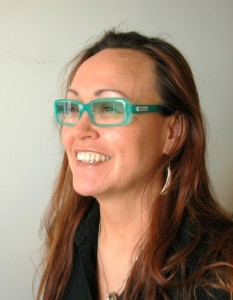El cambio climático y el calentamiento global ya no son una posibilidad sino una realidad. "Debido a las temperaturas más cálidas del Ártico durante los últimos años, la capa acumulada de hielo es cada vez más fina y no se reemplaza totalmente durante los inviernos. Los datos recogidos por los expertos indican que hace 25 años la zona cubierta con hielo de más de 4 años -las capas más gruesas- representaba el 26% del total de hielo en el Ártico mientras que en la actualidad solo representa el 7% del total" (La Vanguardia, 17/02/2014).
Esas alteraciones se comprueban en un video dado a conocer en febrero de 2014:
Groenlandia es también un lugar marcado por el colonialismo, la violencia y la presencia de submarinos de misiles. Ante esta realidad, la artista groenlandesa Jessie Kleemann (1959) escribió una serie de poemas, aún inédita, que reflexiona sobre el impacto del cambio climático a un nivel emocional y en las actividades cotidianas en su isla de origen. Así, entra en un espacio anímico que refleja el dolor ante la creciente pérdida de un paisaje de glaciares serenos. La voz poética apela a sus ancestros mientras el musgo de la realidad suelta murmullos. Los glaciares se están derritiendo y Groenlandia se va convirtiendo en una "Hiber Nación", en palabras de Kleemann. Hemos adaptado su "Poema Nº 6" a un vídeo dirigido por Diego Barraza.
 Foto / Photo: Talinga!
Foto / Photo: Talinga!
Greenland is also a place marked by colonialism, violence and the presence of missile submarines. True to this reality, Greenlandic artist, Jessie Kleemann (1959), wrote a series of poems, still unpublished, that reflect on the impact of climate change at an emotional level and on the day-to-day activities of her island home. Thus, the poetic voice enters into a state of mind where the loss of a serene glacier landscape is addressed. The voice appeals to her ancestors as the moss of reality releases murmurs. Glaciers are melting and Greenland is becoming a 'Hiber Nation', in Kleemann's words. We have adapted her 'Poem Nº 6' to a video directed by Diego Barraza.
 Jessie Kleemann. Foto / Photo: Wolf in the Winter
Jessie Kleemann. Foto / Photo: Wolf in the Winter



